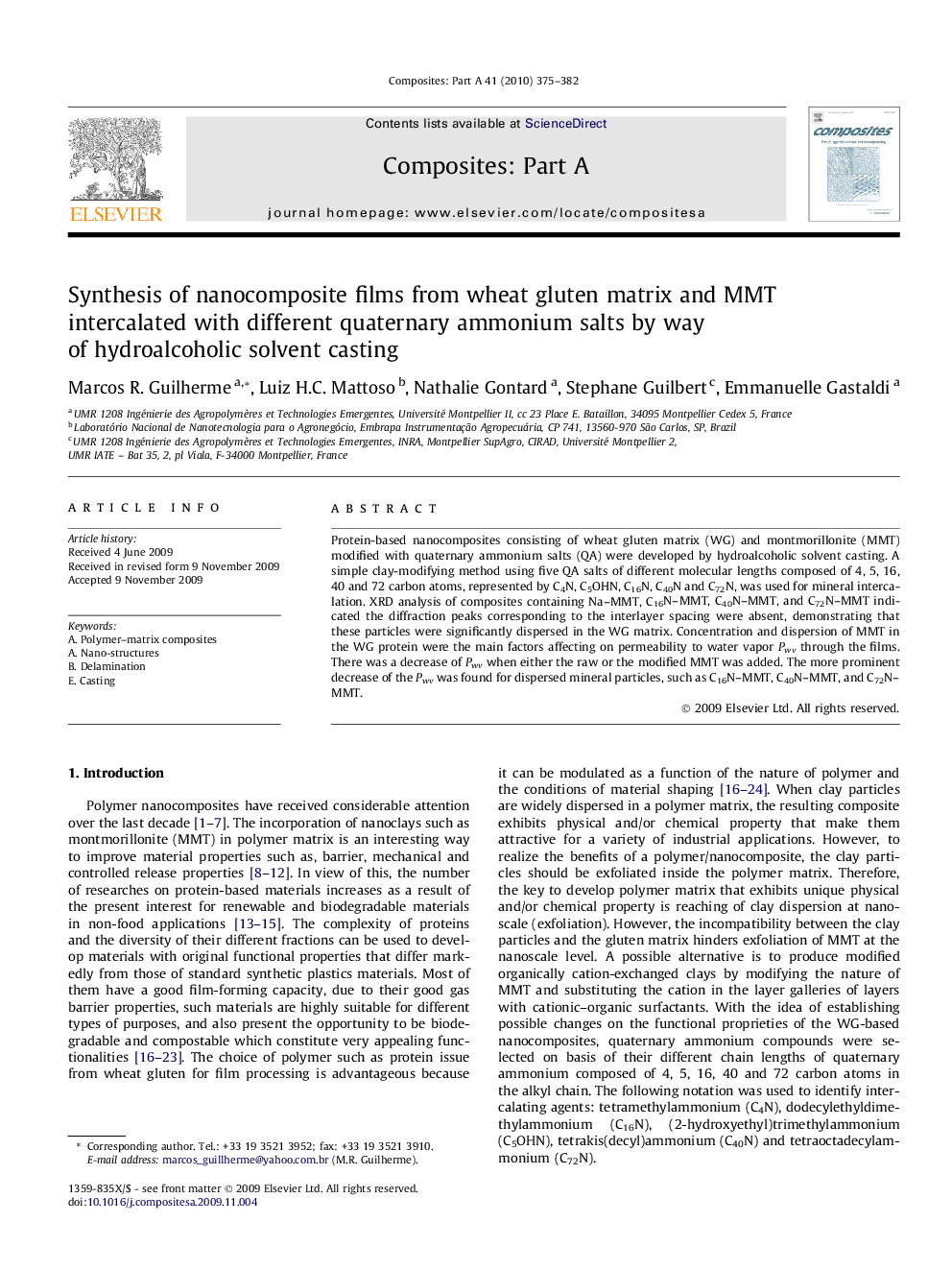| Article ID | Journal | Published Year | Pages | File Type |
|---|---|---|---|---|
| 1466723 | Composites Part A: Applied Science and Manufacturing | 2010 | 8 Pages |
Protein-based nanocomposites consisting of wheat gluten matrix (WG) and montmorillonite (MMT) modified with quaternary ammonium salts (QA) were developed by hydroalcoholic solvent casting. A simple clay-modifying method using five QA salts of different molecular lengths composed of 4, 5, 16, 40 and 72 carbon atoms, represented by C4N, C5OHN, C16N, C40N and C72N, was used for mineral intercalation. XRD analysis of composites containing Na–MMT, C16N–MMT, C40N–MMT, and C72N–MMT indicated the diffraction peaks corresponding to the interlayer spacing were absent, demonstrating that these particles were significantly dispersed in the WG matrix. Concentration and dispersion of MMT in the WG protein were the main factors affecting on permeability to water vapor Pwv through the films. There was a decrease of Pwv when either the raw or the modified MMT was added. The more prominent decrease of the Pwv was found for dispersed mineral particles, such as C16N–MMT, C40N–MMT, and C72N–MMT.
